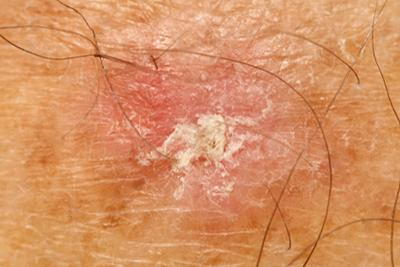
What To Expect During and After Actinic Keratosis Treatment
Are you not sure what to expect from Actinic Keratosis treatment? Discuss it with Dr. Clifford Lober in Kissimmee and Ocoee, FL, as part of your treatment plan.
What Is Actinic Keratosis?
Actinic keratosis is a skin condition characterized by significant changes to the appearance and texture of skin. More specifically, this condition may cause patches of your skin to develop a scaly appearance.
Additional symptoms of actinic keratosis may include discoloration, itchiness, and bleeding. The patches of scaly and discolored skin may appear on the scalp, face, neck, forearms, and hands.
Be wary of actinic keratosis because it indicates excessive sun damage. Furthermore, some actinic keratoses have the potential to be cancerous. You must consult a dermatologist to determine if the patches of dry and discolored skin on your body could lead to a more serious condition.
Risk factors for actinic keratosis include aging and increased sensitivity to ultraviolet rays. You should also schedule regular consultations with your dermatologist if you have a weakened immune system or a job that causes you to stay outdoors for extended periods.
Dr. Lober can offer treatment for actinic keratosis to residents of Kissimmee and Ocoee, FL.
What Are the Treatment Options for Actinic Keratosis?
Doctors diagnose actinic keratosis through visual exams, palpations, and biopsies. Once your dermatologist has confirmed that the unusual patches of your skin are manifestations of the aforementioned condition, they will proceed with treatment.
Your dermatologist can use different treatment methods to address your actinic keratosis. For instance, they may use medication to remove it. The medications used in treatment may cause some discomfort. After your treatment, expect some swelling, irritation, and burning sensations for a while.
Cryotherapy is another option for treating actinic keratosis. This treatment involves freezing the affected patch of skin so it eventually falls off. You should consider cryotherapy if you’re looking for a speedy treatment option because it can be completed in a few minutes. However, blisters and scars are likely to appear on the treated areas.
In cases where the patient has thick actinic keratoses, the dermatologist may decide to use curettage. During curettage, your doctor will scrape off the patches of your skin that have sustained significant damage. After the scraping is done, the doctor may use an electric current to destroy the affected tissue. Similar to cryotherapy, curettage can cause scars to form on the affected patches of skin.
Contact Us Today
Work closely with your dermatologist to determine which treatment option is right for you. Contact Dr. Lober in Kissimmee and Ocoee, FL, to secure effective treatment for actinic keratosis. Call our Kissimmee office at (407) 846-7166 or our Ocoee office at (407) 656-9700.